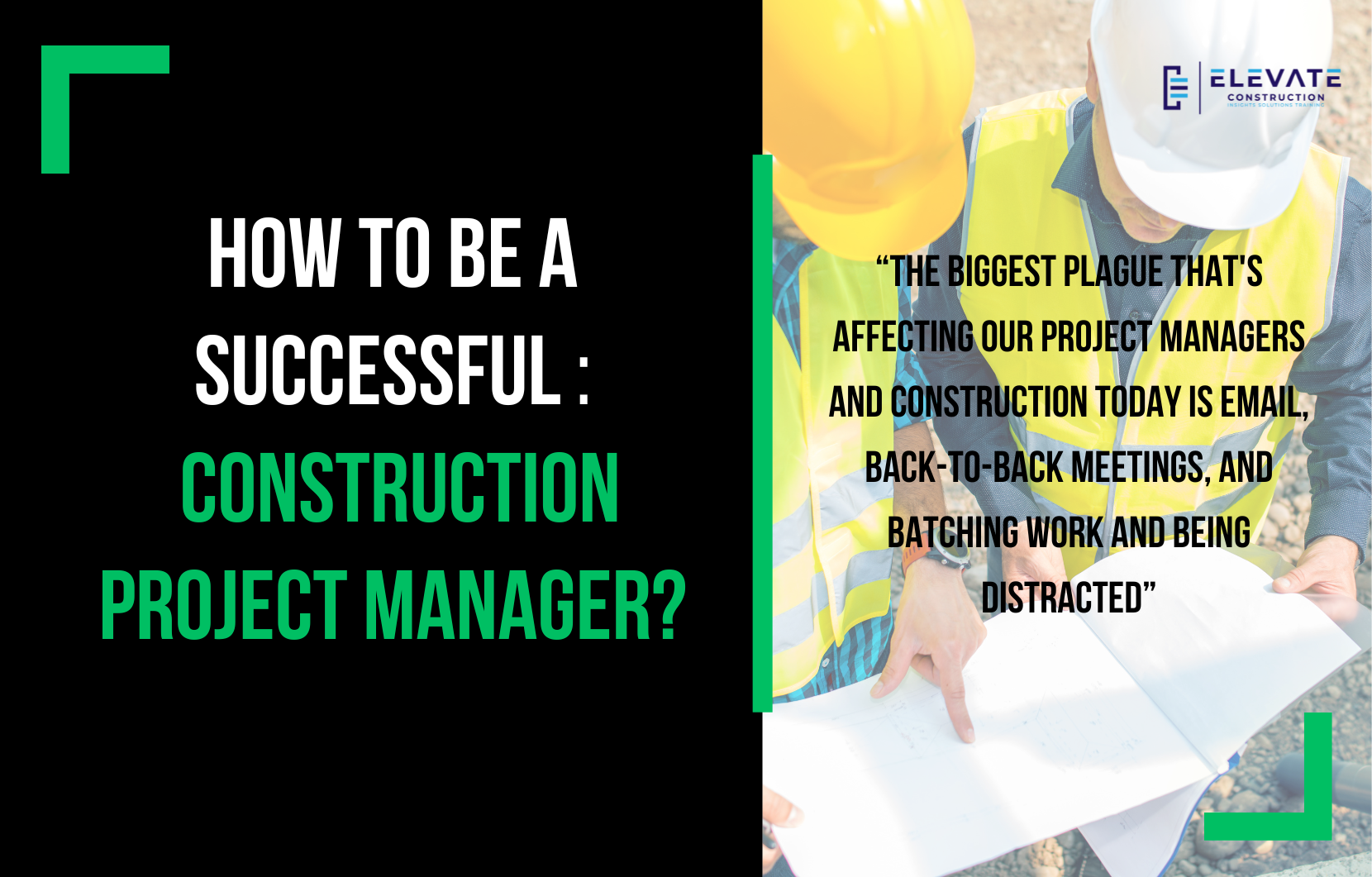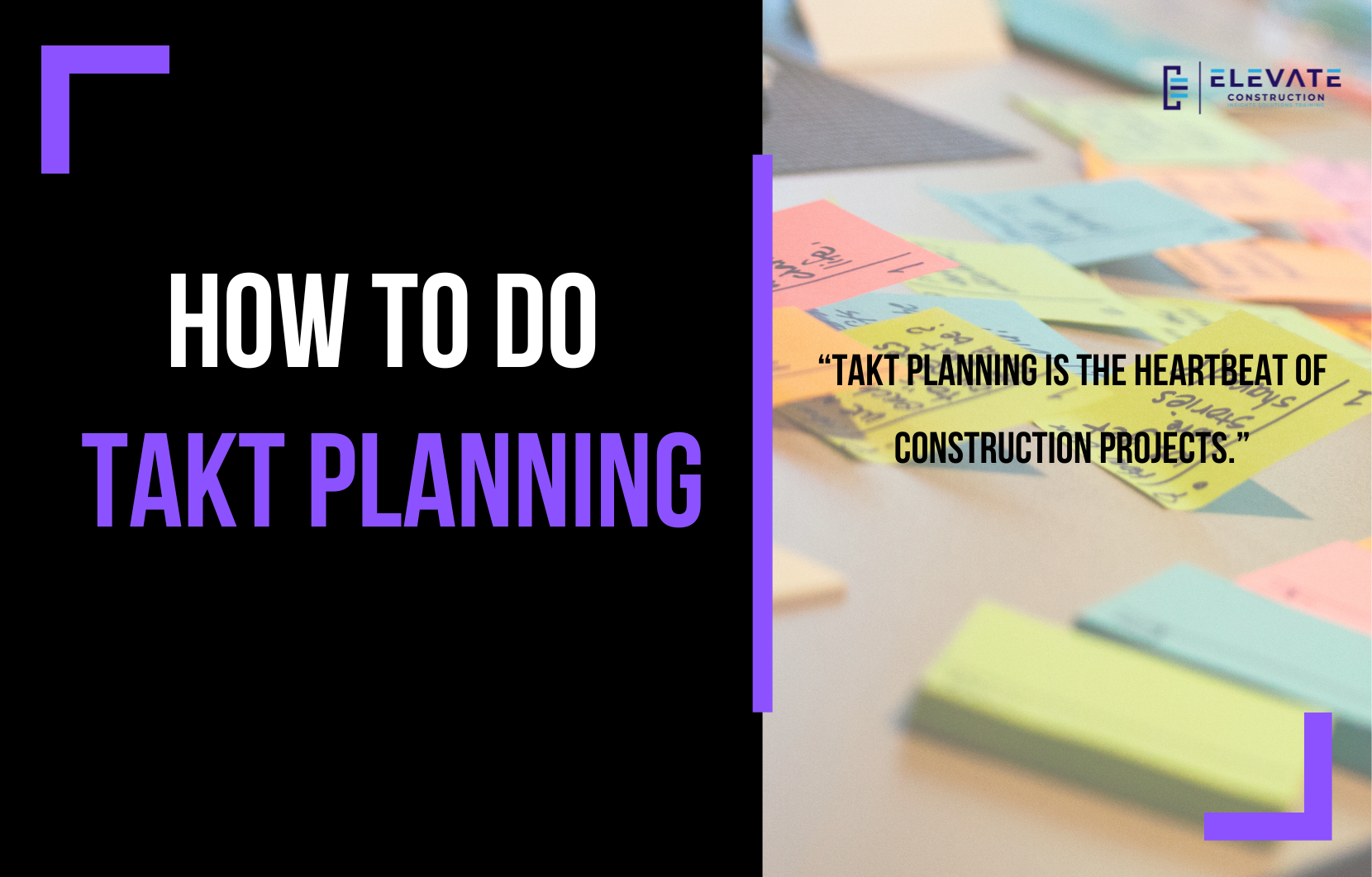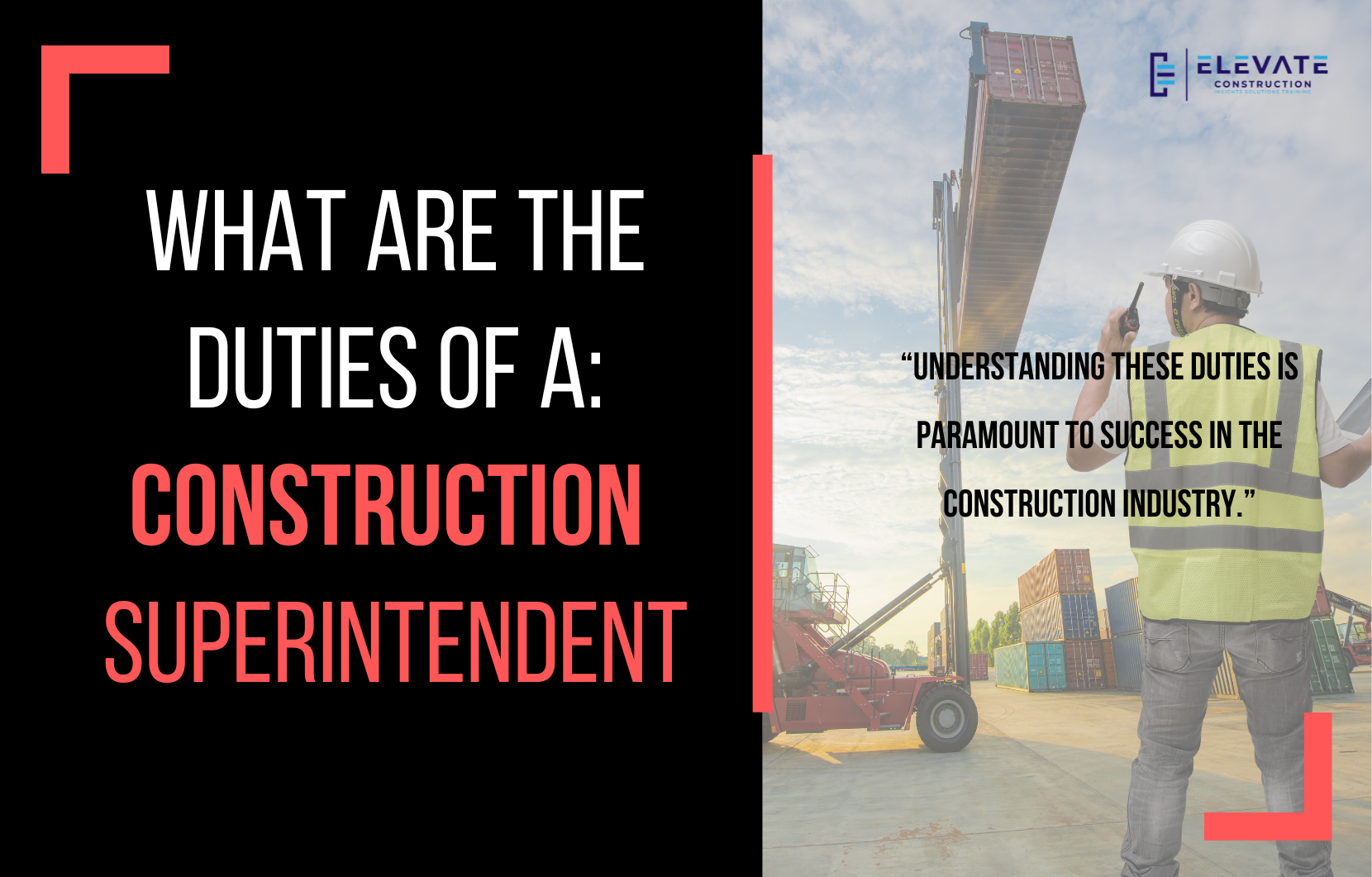In this blog post, you’ll know how to be more effective, focus more, and get distracted less. So here’s a question, what are the three things that every project manager must do? How can you make sure you don’t get distracted from your role? Where should your focus be doing or leading? And what is your most important meeting for the day or week? And what are the three things that you must take time to do in your role, we’re going to talk about all of these in this blog post now. Alright, so this is my jam. I love this. And just so you know.
Common Challenges Construction Project Managers Face
the biggest plague that’s affecting our project managers and construction today is email, back-to-back meetings, and batching work and being distracted, I literally go around the country and like, see PMS, God bless them. They’re such good people, but they are victimized by back-to-back meetings, never being able to get things done, victimized by too many emails and becoming professional email answers and victimized by distractions. I don’t want that for you. And so, I have shown you the key concepts of how to be a successful project manager and another blog post, we’re going to take a little bit different spin on this one today and cover some very specific things that you can do to be successful.
Importance Of Having The Right Systems
So first and foremost, I want to bring your mind to something that’s brilliant that we don’t talk about a lot in our industry, you must have the systems that create the capacity for you to gain additional capability. And it’s really a cycle, meaning if you get additional capability and training, then you’re able to have a better system, more capacity, more capacity to learn to get capability, better systems, and then it just keeps running. And so you must have the right systems, you must have the right schedule, you must have these things that I’m about to tell you and place to even be able to implement on your project. So here are the three.
3 Things Every Project Managers Must Do & Have
The three things that every project manager must do and must have, number one personal organization, it’s got to happen. In fact, we have personal organization planners, specifically for project managers that you can download in the description below. We’ll talk to you about that a little bit later. But you have to have a way to keep a to-do list and to track your Leader Standard Work and plan those in day tight compartments and to really organize your day in an effective manner.
Using one piece flow with buffers. Second, you must have good team health. That means that your project team is able to work together cohesively, everyone knows where the project is headed, the plan and schedule is visible for all and everyone covers for each other so that not one single person who gets burnt out. Third, you got to get that team rallied behind that team balance and health effort.
Importance Of Having A Personal Organization System
Which means step number one, remarkable team meetings. If I can get and you can get your team in a meeting focused with the right agenda, you can do anything you can conquer the world, all you got to do is get the right team and the right meetings, and you can jam out. So every week, weekly team meeting, here’s what you’re going to want to do, you’re going to want to build that team, really engage that team in the five behaviors, and you’re going to want to rally them around a specific milestone. With that, then you’ll make all planning systems scheduled procurement logistics zone maps, everything visual on the wall, according to the last planner system.
So, they see as a group, knows as a group and act as a group. Now that the team has rallied behind that you’re going to have conversations every week about PTO, about coverage about filling in for each other about keeping on schedule and keeping ahead of the deliverables and milestones that you have on that schedule. And that is the only way to get everybody working in the same direction to where everything doesn’t fall only on you.
If I had to go build a house, or do some crazy effort, or clean up an entire like church activity at the gymnasium, I wouldn’t start doing it myself. I would organize a team. Many hands make light work. So you have to have the personal organization and organize yourself. You have to have team balance and health and organize the team, you have to have the plan in the alignment to get the whole team working together collaboratively because many hands make light work that will give you additional capacity to do your job as a project manager. Those are the three key components that every project manager must ensure is implemented on their projects.
And so we have blog posts on this channel about how that will link you to that teach you how to have a personal organization system but let me say this, if you don’t keep it to-do list that’s going to hurt. If you don’t have leaders down Your work every week, that’s going to hurt. If you’re not time blocking your days to focus, do one piece flow that’s going to hurt. If you don’t have buffers between meetings and tasks, that’s going to hurt, you are going to waste 1 to 4 and sometimes, in some cases six hours a day by batching work and losing time, from context switching, that means you’re going to feel at the end of the day that you can’t go home, because you’re behind schedule, and your family and your health is going to suffer.
So, you have to have a personal organization system, it’s a must for every project manager. Okay. And so one concept of alignment is like we can all be aligned around these blog posts and like and subscribe. I mean, the more we do that, the algorithm then spreads that to more people, more information, and the entire industry starts to have more and better standards on how to execute work. Wouldn’t it be cool, like and subscribe right now.
Benefits Of Takt Planning For Master Schedules
And so I want to talk about two more concepts. From a scheduling standpoint, always you will have a tax plan for your master schedule. This allows you as the project manager to not only see the flow of the project, your contractual commitments, how to manage the team, when billing should be done, labor counts, but it also says when you’re going to need certain information and certain materials to the project site, you as a project manager will always encourage and want your superintendents to implement the last planner system, which means that your trades are now bought in to the direction of your project. And now requesting the key things they need to feed that short interval scheduling process. This is the coolest part I’m going to tell you about now,
How To Use A Scrum Board Productively As A Project Manager
as a project manager, you will always have a scrum board with columns that say backlog sprint backlog in progress and complete that board is where you garner roadblocks and to do this that was for the team so and the project engineers can enable the field. So as your last planner system is where I love this, this is great as your last planner system is working.
If you want to learn more we have:
-Takt Virtual Training: (Click here)
-Check out our Youtube channel for more info: (Click here)
-Listen to the Elevate Construction podcast: (Click here)
-Check out our training programs and certifications: (Click here)
-The Takt Book: (Click here)
Discover Jason’s Expertise:
Meet Jason Schroeder, the driving force behind Elevate Construction IST. As the company’s owner and principal consultant, he’s dedicated to taking construction to new heights. With a wealth of industry experience, he’s crafted the Field Engineer Boot Camp and Superintendent Boot Camp – intensive training programs engineered to cultivate top-tier leaders capable of steering their teams towards success. Jason’s vision? To expand his training initiatives across the nation, empowering construction firms to soar to unprecedented levels of excellence.
On we go!











